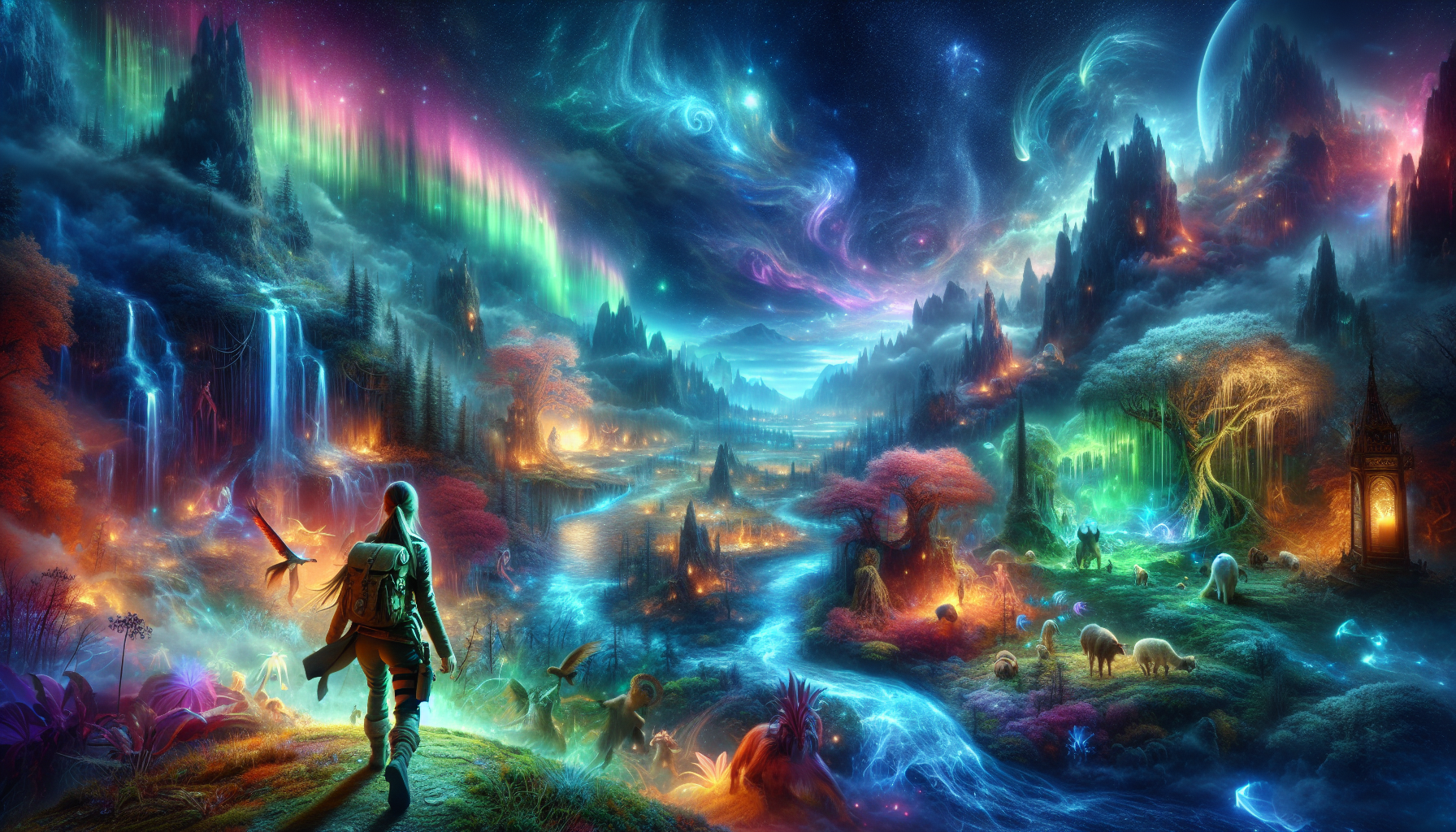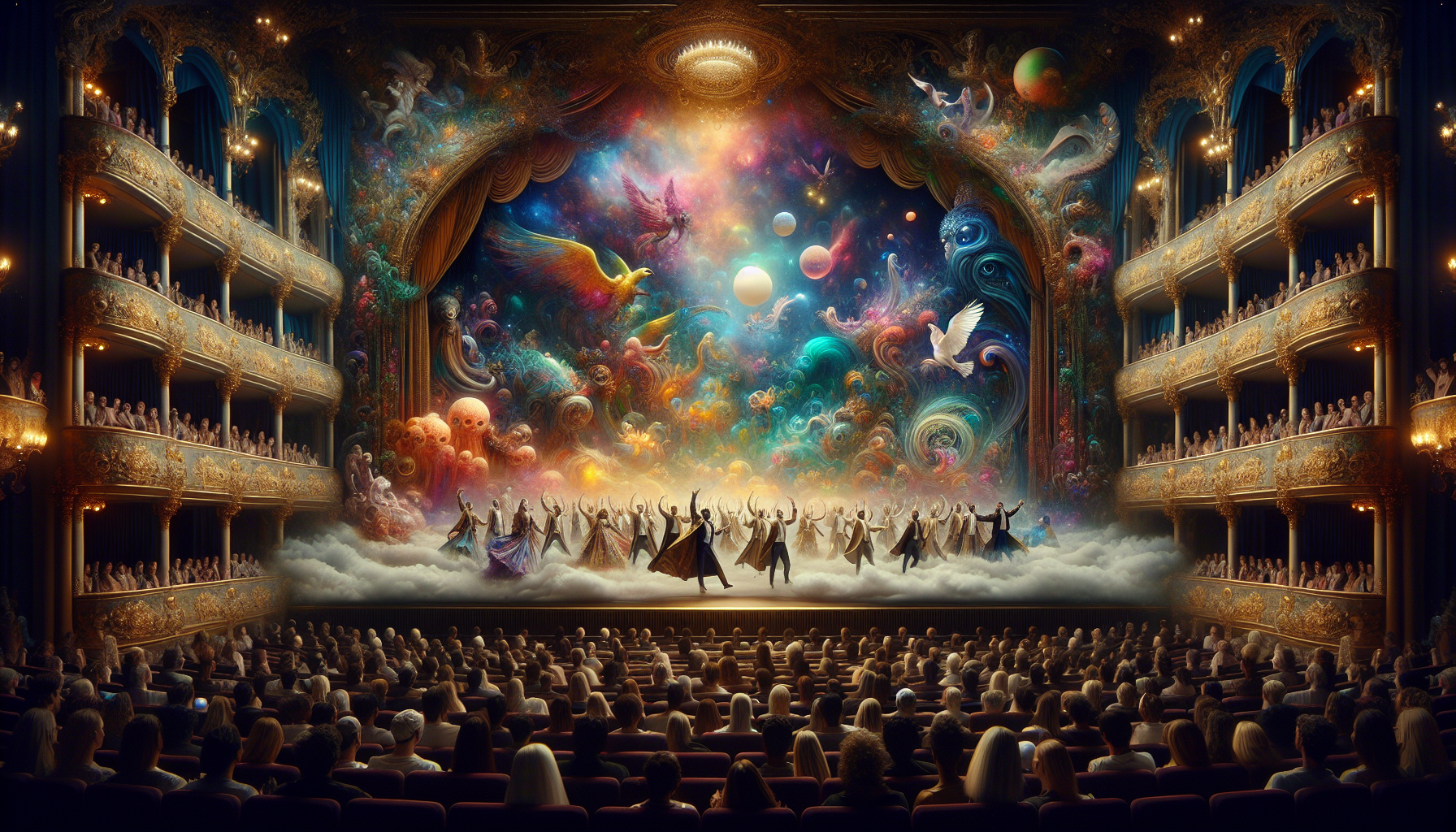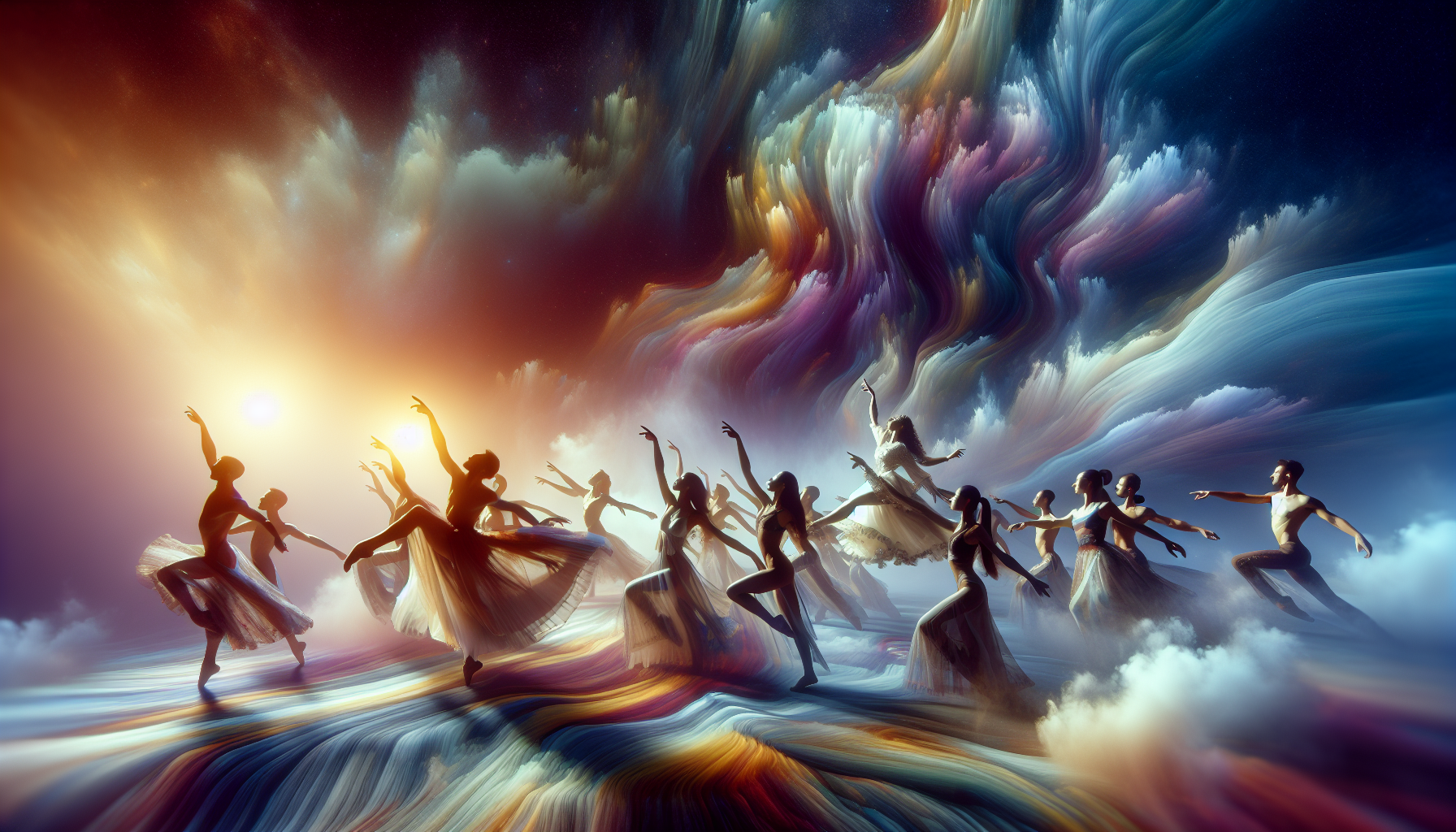In a world brimming with technological marvels and scientific advancements, the enigmatic realm of dreams continues to captivate the human imagination. 🌌 From the earliest civilizations to the modern age, dreams have been a source of mystery and wonder, prompting questions that transcend time and culture. What if the dreams we experience are not merely solitary adventures of the mind, but rather a shared voyage through a collective subconscious? In this exploration of ancient collective dreaming beliefs, we embark on a journey through the annals of history, where dreams were not just personal narratives, but communal experiences that shaped entire societies.
Our fascination with dreams is as old as humanity itself. As we close our eyes and surrender to the night, we enter a domain where the impossible becomes possible, and the boundaries of reality blur into the ethereal. Yet, for our ancestors, dreams were more than mere nocturnal wanderings. They were a powerful tool for understanding the world, a bridge to the divine, and a means of connecting with one another on a profound level. The notion of collective dreaming—where communities shared dreams and drew meaning from their common themes—was a cornerstone in various ancient cultures. As we delve into this intriguing topic, we uncover how civilizations across the globe perceived dreams as communal experiences, offering insights that shaped their beliefs, practices, and social structures.
In the heart of ancient societies, dreams were a canvas upon which the collective psyche painted vivid stories and symbols. From the dream temples of Egypt, where the faithful sought divine guidance, to the Aboriginal Dreamtime of Australia, where the creation of the world was dreamed into existence, the act of dreaming was deeply woven into the cultural fabric. The Sumerians, often credited with one of the earliest known civilizations, believed that dreams were messages from the gods, a belief echoed by the Greeks and Romans. This concept of shared dreaming not only influenced religious practices but also played a role in decision-making processes, leadership selections, and the interpretation of omens. The significance placed on collective dreaming reveals a fascinating intersection of spirituality, psychology, and social dynamics, prompting us to reconsider our understanding of human consciousness.
As we navigate through the rich tapestry of ancient collective dreaming beliefs, we encounter a diverse array of practices and interpretations. Each culture, with its unique worldview, contributed to the mosaic of dreaming traditions. The Native American tribes, for instance, viewed dreams as a source of wisdom and healing, often sharing their visions in communal gatherings to seek guidance from ancestral spirits. Meanwhile, in the Far East, Chinese and Indian traditions emphasized the moral and philosophical implications of dreams, exploring their potential to reveal deeper truths about the self and the universe. By examining these diverse perspectives, we gain insight into how dreams transcended individual experiences, becoming a shared language through which communities communicated, learned, and evolved.
Today, as we stand at the crossroads of ancient wisdom and modern science, the mysteries of collective dreaming beckon us to look beyond the confines of individual experience. What lessons can we glean from our ancestors’ beliefs? How can the concept of collective dreaming enrich our understanding of the interconnectedness of human consciousness? In this exploration, we will delve into the profound impact of dreams on cultural evolution, the scientific inquiries that challenge and complement ancient beliefs, and the enduring allure of dreams as a source of inspiration and discovery. By unlocking the secrets of ancient collective dreaming beliefs, we may uncover not only insights into our past but also new pathways for understanding the complexities of the human mind in the present. 🌠
The Origins of Collective Dreaming Beliefs
The concept of collective dreaming, or shared dreams, is not a novel idea. It has deep roots embedded in ancient cultures and societies. For centuries, human beings have been fascinated by the mysteries of dreams, often perceiving them as portals to other realms, carriers of divine messages, or reflections of communal consciousness. Various cultures across the globe have rich traditions and beliefs surrounding the phenomenon of collective dreaming, viewing it as a bridge between the physical and spiritual worlds.
In ancient Mesopotamia, dreams were regarded as powerful omens and messages from the gods. Dream interpreters, often priests, would analyze these nocturnal visions to discern their meanings and implications for the individual and society. Similarly, in ancient Egypt, dreams were considered significant, with temples dedicated to dream incubation, where individuals could seek divine guidance through their dreams. This communal approach to dreaming was integral to the spiritual and cultural fabric of these societies, highlighting the importance of dreams in understanding collective experiences and societal values.
The Aboriginal peoples of Australia also hold deep-rooted beliefs in collective dreaming. Known as the “Dreamtime,” it represents the foundational spiritual period during which ancestral beings shaped the world. The Dreamtime encompasses both the creation of the universe and the ongoing reality that connects all living beings. For Aboriginal Australians, dreaming is not only an individual experience but a shared journey that reinforces communal ties and cultural heritage. The concept of collective dreaming thus serves as a means of preserving and transmitting knowledge, cultural values, and history from one generation to the next.
Collective Dreaming in Ancient Cultures
Ancient cultures around the world have fascinating beliefs about collective dreaming, viewing it as a phenomenon that transcends individual experience and taps into a universal consciousness. In ancient Greece, dreams held significant importance and were believed to provide insights into both personal and communal matters. Temples dedicated to Asclepius, the Greek god of healing, served as centers for dream incubation, where individuals sought healing and guidance through shared dreams. The Greeks believed that during these sacred experiences, individuals could connect with the divine, receiving messages that benefitted both the dreamer and the broader community.
Similarly, the Native American tribes possess rich traditions surrounding collective dreaming. For the Iroquois, dreams are considered an essential part of life, acting as a bridge between the physical and spiritual worlds. The practice of dream sharing is integral to their culture, with dreamers encouraged to recount their dreams to the community. This practice allows for collective interpretation and understanding, strengthening communal bonds and guiding collective decision-making. By sharing and interpreting dreams, the Iroquois reinforce their cultural identity and maintain a strong sense of unity.
In Asia, the Tibetan Buddhist tradition also places great emphasis on the significance of dreams. The concept of “dream yoga” involves using dreams as a tool for spiritual enlightenment and understanding the nature of reality. Practitioners aim to achieve lucidity within dreams, enabling them to engage in spiritual practices and attain higher levels of consciousness. This practice extends beyond individual enlightenment, as collective dreaming is seen as a means of fostering compassion, understanding, and interconnectedness among individuals. The belief in collective dreaming in Tibetan Buddhism underscores the idea that dreams have the power to transcend personal boundaries and unite people on a deeper spiritual level.
Scientific Perspectives on Collective Dreaming
While ancient cultures have long held beliefs in collective dreaming, modern science seeks to understand the phenomenon from a different perspective. Neuroscience and psychology offer insights into the nature of dreams and the possibility of shared dreaming experiences. Studies have explored the role of the brain in dreaming, highlighting the complex interplay between consciousness, memory, and emotional processing. These scientific perspectives provide a foundation for understanding the mechanisms behind dreams and their potential for collective experiences.
One intriguing area of research is the concept of “dream telepathy,” which suggests that individuals can communicate or share experiences through dreams. Although scientific evidence supporting dream telepathy remains limited, some studies have explored the potential for shared dreaming experiences among individuals with close emotional connections. These studies suggest that the emotional bond between individuals may facilitate shared dream elements, such as themes, symbols, or emotions. While more research is needed to substantiate these claims, the possibility of dream telepathy adds an intriguing dimension to the understanding of collective dreaming.
Additionally, the phenomenon of “lucid dreaming” offers insights into the potential for shared dreaming experiences. Lucid dreaming occurs when individuals become aware that they are dreaming and gain some degree of control over the dream narrative. Researchers have explored the potential for inducing lucid dreams in multiple individuals simultaneously, opening up the possibility of shared dream experiences. While scientific exploration of collective dreaming remains in its infancy, these studies provide a glimpse into the potential for shared consciousness and the interconnectedness of human experiences.
To delve deeper into the scientific perspectives on collective dreaming, check out this engaging YouTube video: The Science of Dreams by Vsauce. 🎥
Modern Interpretations and Applications of Collective Dreaming
In contemporary society, the concept of collective dreaming has evolved to encompass both ancient beliefs and modern interpretations. As technology advances and globalization continues to shape cultural exchanges, the idea of collective dreaming has taken on new forms and applications. From online dream-sharing communities to collaborative art projects, modern interpretations of collective dreaming highlight the enduring fascination with the mysteries of the subconscious mind and the potential for shared human experiences.
Online platforms dedicated to dream sharing have emerged as virtual spaces where individuals can connect, share, and interpret their dreams with others worldwide. These platforms provide opportunities for people to explore common dream themes, symbols, and narratives, fostering a sense of global interconnectedness. By engaging in collective dream sharing, individuals gain new insights into their dreams and participate in a broader dialogue about the human experience. This modern interpretation of collective dreaming aligns with the ancient belief that dreams can transcend personal boundaries and offer insights into universal truths.
Collective dreaming has also found expression in the realm of art and creativity. Collaborative art projects inspired by shared dream experiences have become a powerful means of exploring the collective unconscious and expressing the shared human condition. Artists and creators draw inspiration from their dreams, creating works that resonate with others on a deep, emotional level. These artistic expressions serve as a testament to the enduring power of dreams to inspire, unite, and transcend cultural and linguistic barriers.
To further explore the modern applications of collective dreaming, check out this table that compares ancient beliefs with contemporary interpretations:
| Aspect | Ancient Beliefs | Modern Interpretations |
|---|---|---|
| Dream Significance | Divine messages, omens, spiritual guidance | Insights into the subconscious, emotional processing |
| Dream Sharing | Communal interpretation, cultural preservation | Online platforms, global dialogue |
| Creative Expression | Cultural storytelling, myth creation | Collaborative art projects, shared human experiences |
Conclusion
Concluding this exploration into the rich tapestry of ancient collective dreaming beliefs, we find ourselves at the intersection of history, culture, and psychology. The journey through this fascinating subject has unveiled a wealth of knowledge about how ancient civilizations perceived dreams not merely as personal experiences but as communal phenomena that could influence the course of societies. From the Aboriginal dreamtime narratives to the Greek oracles, dreams have served as a bridge between the mundane and the divine, a conduit for messages from the gods, and a source of communal wisdom.
Throughout our discussion, we examined various cultures’ interpretations of collective dreaming. In Aboriginal Australian culture, dreams are a fundamental part of their belief system, serving as a narrative of creation and an ongoing connection to the spiritual world. This sacred tradition underscores the importance of dreams in maintaining cultural identity and continuity. Meanwhile, the ancient Greeks viewed dreams as messages from the gods, a practice that not only influenced individual decision-making but also impacted political and social spheres. Similarly, in Mesoamerican civilizations, dreams were considered vital to understanding the cosmos and guiding communal decisions.
One of the most compelling aspects of these beliefs is how they underscore the power of shared experiences and the collective unconscious. Carl Jung’s theories on the collective unconscious provide a modern psychological framework that echoes these ancient understandings, suggesting that dreams tap into universal archetypes and shared human experiences. This interconnectedness across time and space highlights the enduring human quest to find meaning and connection through dreams.
The study of ancient collective dreaming beliefs also opens up intriguing questions about the role of dreams in contemporary society. In our modern, often individualistic world, the notion of dreaming together might seem foreign or even implausible. However, the resurgence of interest in shared dreaming practices, like dream sharing groups and collaborative dream projects, suggests that we are beginning to recognize the value of connecting through our dreamscapes once more. These practices not only foster community but also provide insights into our shared human experience, bridging gaps between diverse cultures and histories.
Reflecting on these ancient practices invites us to consider the potential of dreams as tools for personal and collective growth. Dreams can serve as a mirror, reflecting our deepest fears, hopes, and desires, while also providing a canvas for creative problem-solving and innovation. Embracing the lessons from ancient collective dreaming can inspire us to pay closer attention to our dreams and to engage with them not just as isolated experiences but as part of a larger, interconnected tapestry of human consciousness.
The exploration of ancient collective dreaming beliefs reminds us of the profound mystery and wonder that dreams hold. As we navigate the complexities of modern life, tapping into the wisdom of our ancestors and acknowledging the communal aspect of dreaming can enrich our understanding of ourselves and our world. It encourages us to view dreams not merely as fleeting nocturnal visions but as a vital part of our cultural and spiritual fabric.
We invite you, dear reader, to reflect on your own dreams and consider the possibility that they might be part of a larger narrative. Share your insights with others, engage in discussions, and explore the diverse ways dreams manifest in different cultures and contexts. By doing so, you contribute to the ongoing conversation about the role of dreams in shaping our collective human experience.
In closing, let us remember that the mysteries of dreams are as infinite as the cosmos itself. As we continue to dream together, may we unlock new insights and forge deeper connections, both with ourselves and with the world around us. Let’s embrace the wisdom of the past and use it to illuminate our present and future paths. 🌙✨
For further exploration of this topic, consider visiting reputable resources such as the Jung Society of Washington or the Dream Studies Portal. Additionally, the Aboriginal Dreamtime website offers insights into the rich cultural heritage of Aboriginal Australian dreaming traditions. Engage with these platforms to expand your understanding and appreciation of the fascinating world of dreams.
Gabriel is a visual storyteller and dream archivist whose work explores the fragile boundary between memory and imagination. Through layered visuals and symbolic design, Gabriel captures the fleeting essence of dreams — those strange, beautiful, and sometimes haunting fragments that drift through sleep and linger in waking thought.
His creative journey is rooted in a deep fascination with the subconscious and the imagery it conjures. From half-remembered landscapes to recurring symbols and surreal encounters, each piece Gabriel brings to life becomes a portal into the inner archive — where time distorts, meanings shift, and personal mythology takes form.
With a background in handcrafted artistry and visual composition, Gabriel merges intuition with intention. His work doesn’t merely depict dreams; it preserves them, translating ephemeral moments into tangible expressions that evoke emotion, curiosity, and quiet revelation. Each visual is both a record and an invitation to explore the rich terrain of inner life.
Through illustrated dream journals, symbolic studies, and visual essays, Gabriel invites others to connect with the poetic architecture of their subconscious landscapes. His art becomes a mirror — not only of what we see at night, but of what we carry deep within.
His work is a tribute to:
-
The fragile beauty of forgotten dreams
-
The language of symbols in the subconscious mind
-
The inner worlds we visit but rarely name
Whether you’re a lucid dreamer, a seeker of hidden meanings, or someone fascinated by the mystery of sleep-born stories, Gabriel welcomes you to step into a space where dreams are not lost — they are archived, one vision, one sketch, one silent narrative at a time.





